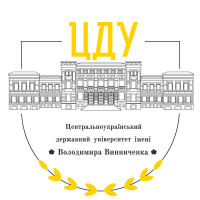“DECOMMUNIZED” CONCEPTS-TOPONYMS IN THE LINGUISTIC CONSCIOUSNESS OF THE RESIDENTS OF UKRAINIAN CITIES
DOI:
https://doi.org/10.32782/2522-4077-2023-206-7Keywords:
reflexeme, concept, word-associate, word-stimulus, verbal model, associative experimentAbstract
The purpose of the study is to determine the linguistic perception of the residents of the renamed Ukrainian cities of important social processes in Ukraine related to the rethinking of the Soviet past, namely decommunization, in particular at the level of changing geographical names. The method of free associative experiment, by means of which it was possible to establish the reactions of the residents of the renamed Ukrainian cities to three wordsstimuli: 1) the term DECOMMUNIZATION; 2) toponyms КРОПИВНИЦЬКИЙ ( KROPYVNYTSKYI) and ГОРІШНІ ПЛАВНІ (HORISHNI PLAVNI), which became the new names of Ukrainian cities, renamed in 2016 (within the decommunization process). The study was conducted in three stages. At the first stage of the study, respondents were surveyed (556) and reflexemes in the amount of 1112 units were received. At the second stage, reflexemes (associates) were grouped according to the types of verbal patterns by which recipients respond to the word-stimulus. At the third stage, the structural and semantic peculiarities of reflexemes within verbal models were determined. The results of the study show that residents of the renamed cities respond to the word-stimulus DECOMMUNIZATION using 5 verbal models: VM1. One word-associate; VM2. Compounds; VM3. Question; VM4. Citation and set expressions; VM5. Punning of the word-stimulus. Semantic indicators give grounds to divide reflexemes into nine groups, the largest of which are words with the semes ‘renewal’, ‘rethinking’, ‘change’. Respondents react to the word-stimulus КРОПИВНИЦЬКИЙ (KROPYVNYTSKYI) and ГОРІШНІ ПЛАВНІ (HORISHNY PLAVNI) with the help of 4 verbal models, and reactions with positive semantics or expression of agreement with the new name of the city prevail among the associates. It is proved that the respondents are generally positive about decommunization processes in Ukraine. The name of the city Kropyvnytskyi is also mostly positively perceived. However, the analysis of the semantic features of reflexemes shows a slight advantage of the positive perception of the new toponym Horishni Plavni.
References
Біла Є.С. Асоціативний експеримент як засіб пізнання ментальної організації ароматонімічного субфрейму. Записки з ономастики. 2017. № 20. С. 41–61. DOI: https://doi.org/10.18524/2410-3373.2017.20.133847.
Горошко О., Пахнін М. Освіта 2.0: Психолінгвістичний аналіз (Частина 2). Psycholinguistics. 2021. № 29(2), С. 46–75. DOI: https://doi.org/10.31470/2309-1797-2021-29-2-46-75.
Грукач В., Ткаченко О., Соловйова Т. Стимул «Україна» й асоціативно-смислове поле ментальних лексиконів студентів. Psycholinguistics. 2019. № 26(2). С. 46–69. DOI: https://doi.org/10.31470/2309-1797-2019-26-2-46-69.
Закон України «Про засудження комуністичного та націонал-соціалістичного (нацистського) тоталітарних режимів в Україні та заборону пропаганди їхньої символіки». Відомості Верховної Ради. 2015. №2 6. URL: https://zakon.rada.gov.ua/laws/show/317-19#Text.
Кирилюк О.Л. Асоціативно-семантичне поле «ЄВРОІНТЕГРАЦІЯ» в мовній свідомості мешканців центральної частини України. Актуальнi питання гуманiтарних наук : міжвузівський збірник наукових праць молодих вчених Дрогобицького державного педагогічного університету імені Івана Франка. 2022. № 56 (2). С. 142–148. DOI: 10.24919/2308-4863/56-2-22.
СУМ-20: Словник української мови: в 20 томах. URL: https://sum20ua.com/Entry/index?wordid=198670&page=725.
УСЕ 2006: Універсальний словник-енциклопедія. 2006. Львів : Тека. URL: http://slovopedia.org.ua/29/53396/9947.html.
Champoux-Larsson Marie-France, Dylman Alexandra S. Different measurements of bilingualism and their effect on performance on a Simon task. Applied Psycholinguistics. 2022. Volume 42, Special Issue 2: Special Issue: Individual Differences in Bilingualism, March 2021. Pp. 505–526. DOI: https://doi.org/10.1017/S0142716420000661.
Dronic V., Helms-Park R. Fixed-choice word-association tasks as second-language lexical tests: What native-speaker performance reveals about their potential weaknesses. Applied Psycholinguistics. 2014. № 35 (1). Pp. 193–221. DOI: https://doi.org/10.1017/S014271641200029X.
Etaywe Awni, Zappavigna Michele. Identity, ideology and threatening communication. An investigation of patterns of attitude in terrorist discourse. Journal of Language Aggression and Conflict. 2022. Vol. 10 (2). Рp. 315–350. DOI: https://doi.org/10.1075/jlac.00058.eta.
Kwon Iksoo. Conceptual metaphors and performativity in the Sunshine Policy. Corpus Approaches to Language, Thought and Communication. / Edited by Wei-lun Lu, Naděžda Kudrnáčová and Laura A. Janda. Review of Cognitive Linguistics. 2019. Vol. 17:1. Pp. 275–294.
Spätgens Tessa, Schoonen Rob. The structure of developing semantic networks: Evidence from single and multiple nominal word associations in young monolingual and bilingual readers. Applied Psycholinguistics. 2020. Vol. 41(5), Pp. 1141–1169. DOI: https://doi.org/10.1017/S0142716420000430.
Wen Xu, Chen Chuanhong. Cultural conceptualisations of loong (龙) in Chinese idioms. Review of Cognitive Linguistics. 2021. Vol. 19:2. Pp. 563–589.








